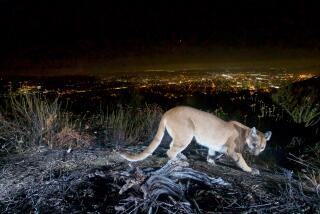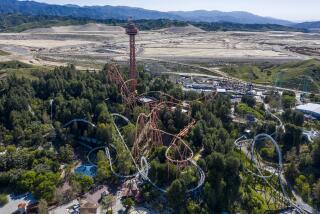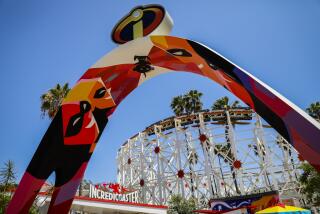Amusement Park Reopens After Slaying
Six Flags Magic Mountain reopened Thursday to its biggest crowd of the year, park executives said, a day after Daniel Vega, a 15-year-old Fontana boy, was shot to death in the parking lot.
Two others shot in the incident, the victim’s 14-year-old cousin and a 37-year-old female bystander, were in good condition at Henry Mayo Newhall Memorial Hospital, officials said.
Meanwhile, sheriff’s detectives questioned the many witnesses to the 8:40 p.m. Wednesday shooting in an effort to track down as many as three gunmen.
“Apparently, they had an argument or some sort of altercation before the shooting,” said Deputy Cruz Solis.
Sheriff’s officials said they do not know if the incident was gang-related.
Solis said the attack was “definitely not a drive-by shooting,” but he declined to describe the form of the assault. However, a guard who had been perched directly over the action in a watchtower said the gunman did fire from a moving car, according to Six Flags spokeswoman Bonnie Rabjohn. The security guard notified the Sheriff’s Department.
“Apparently, [Vega] and his partner were the intended targets,” said Solis, adding that the assailants sped away in a gray Taurus. “There were many witnesses.”
The two survivors declined to be interviewed, and authorities would not identify them.
Although the park had closed 40 minutes before the shooting, many visitors were still walking to their cars when it happened, Rabjohn said.
“This was an isolated and senseless act that could have happened anywhere in Southern California,” she said.
Wednesday night’s shooting was not the first violence at the park.
In 1985, six people were stabbed, four security guards were injured and 20 people were arrested on suspicion of attempted robbery, trespassing, public drunkenness and other misdemeanors after an annual end-of-school party turned into a gang brawl.
In 1993, youths awaiting a concert at Six Flags rioted, attacking a nearby gas station and fast food franchise and stealing cash from registers. It took 380 deputies and California Highway Patrol officers to control the crowd. Later, a Sheriff’s Department report blamed park executives for closing the park 45 minutes early.
Those incidents led to tougher security, including the controversial measure of screening visitors at the entrance gates. Security guards were trained to look for “known indicators” of gang membership and to turn away people who exhibited them. But the practice drew charges of racism after guards stopped nine black members of a Christian youth organization because of their clothes.
Since then the park has been sued three times over the policy. Two of those suits were settled for small sums and one is pending.
Despite criticism of their techniques, Rabjohn said guards turn away would-be patrons every day “if they meet a specific profile. . . . We have to be very aggressive about screening at our gate.”
More to Read
Sign up for Essential California
The most important California stories and recommendations in your inbox every morning.
You may occasionally receive promotional content from the Los Angeles Times.










